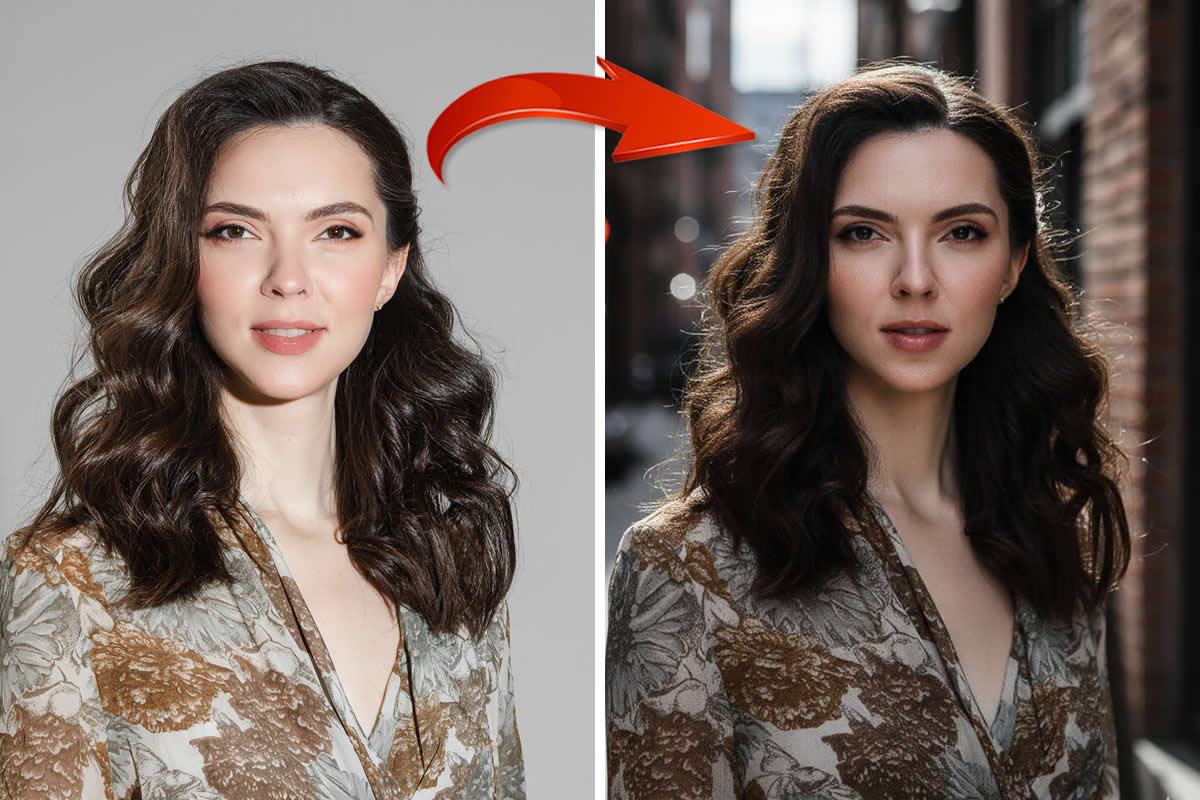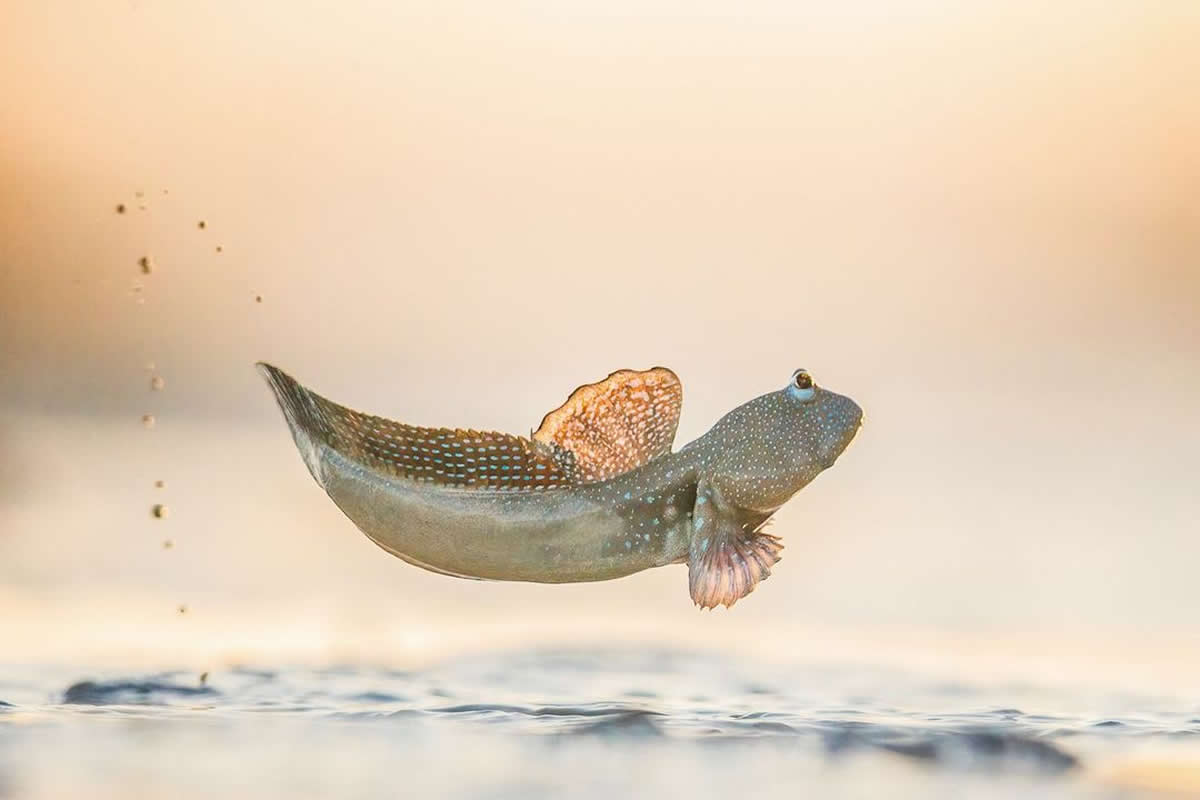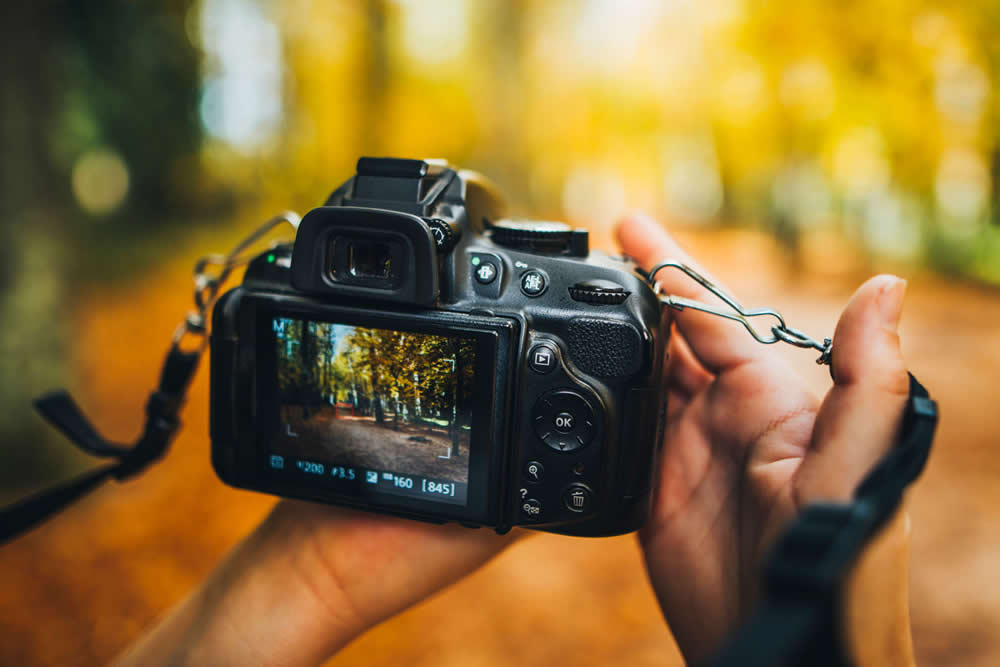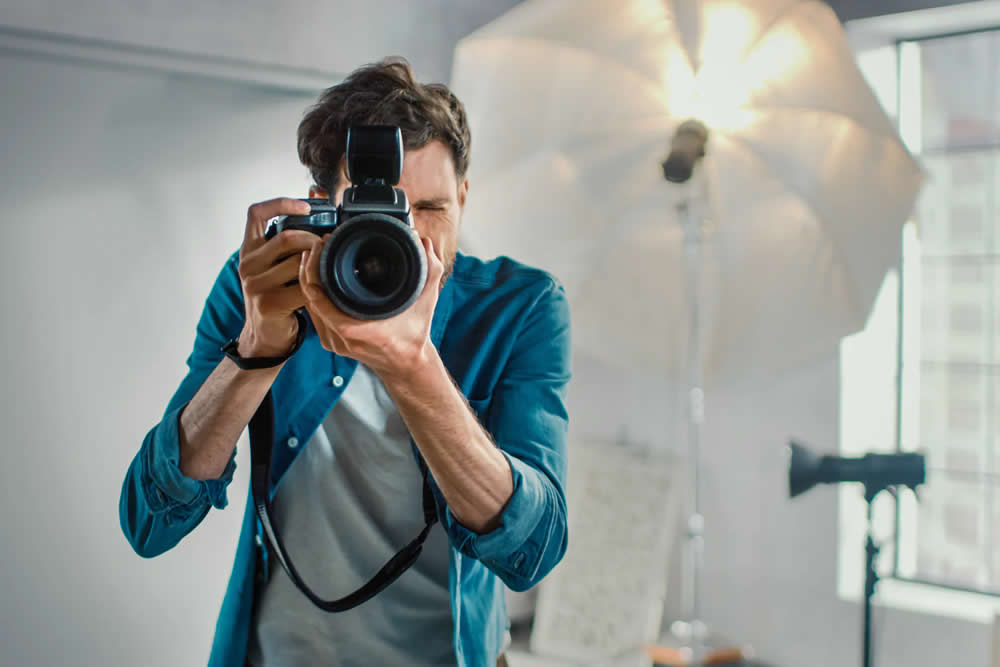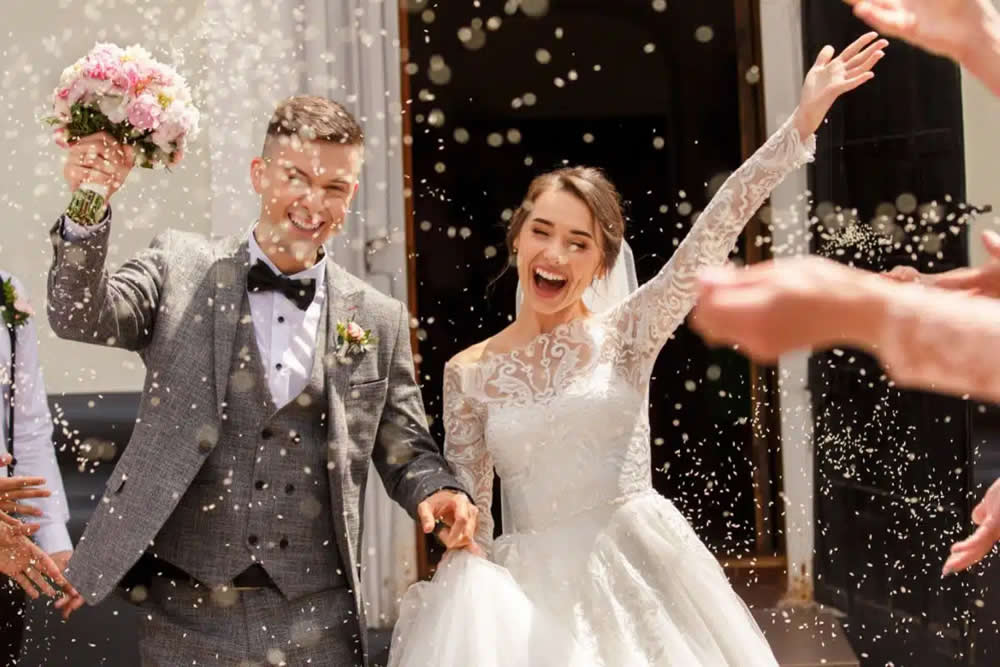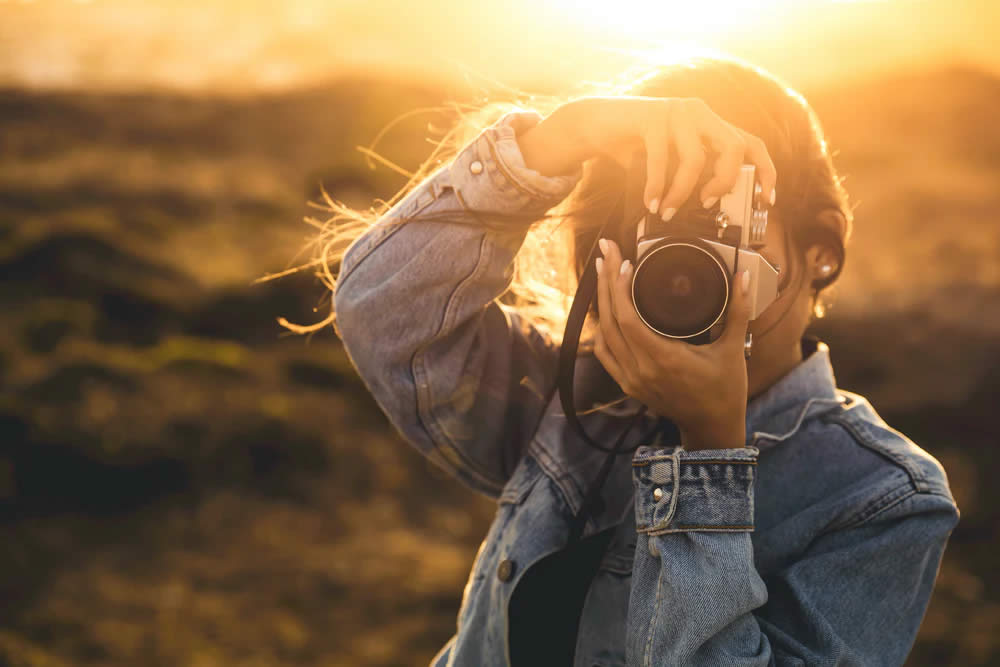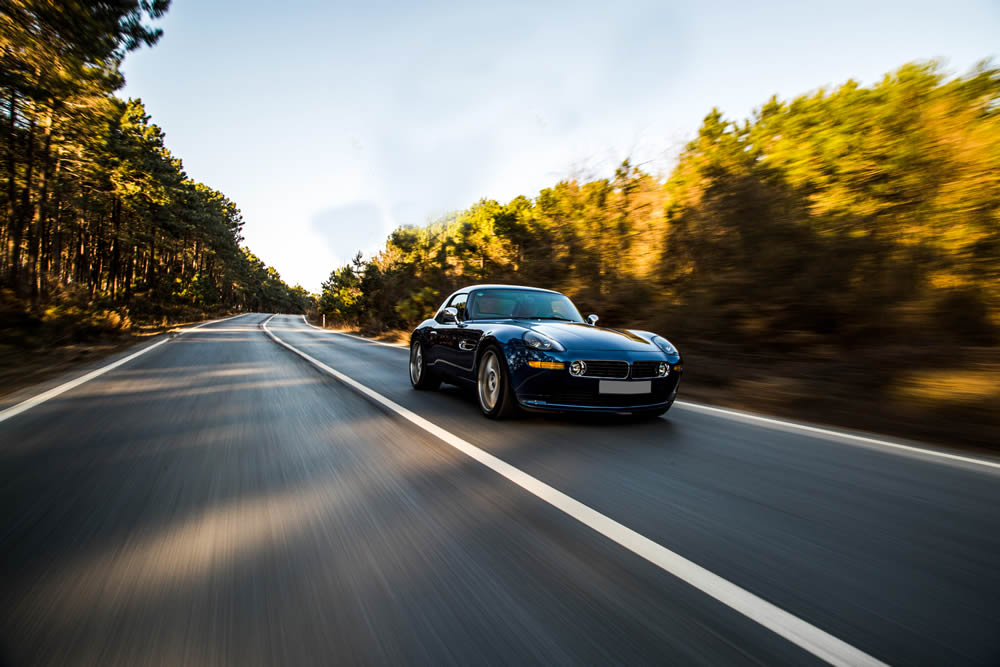The unstoppable forces of digital transformation have been reshaping most traditional industries, and even creative fields are not immune to this inevitable evolution. Filmmaking is an excellent example of this shift. Back in the 20th century, the movie industry relied heavily on film as its primary medium. Although digital video recording systems existed as early as the 1970s, they were not widely adopted. The introduction of the Sony D1 format in 1986 marked a significant milestone in the development of digital video, paving the way for the gradual transition from analog to digital format. From that moment on, traditional films would start to lose their relevance and appeal. The convenience, flexibility, and cost-effectiveness of digital technology made it an attractive option for filmmakers. By the 2010s, digital video had practically replaced film, turning it into a relic from the past.
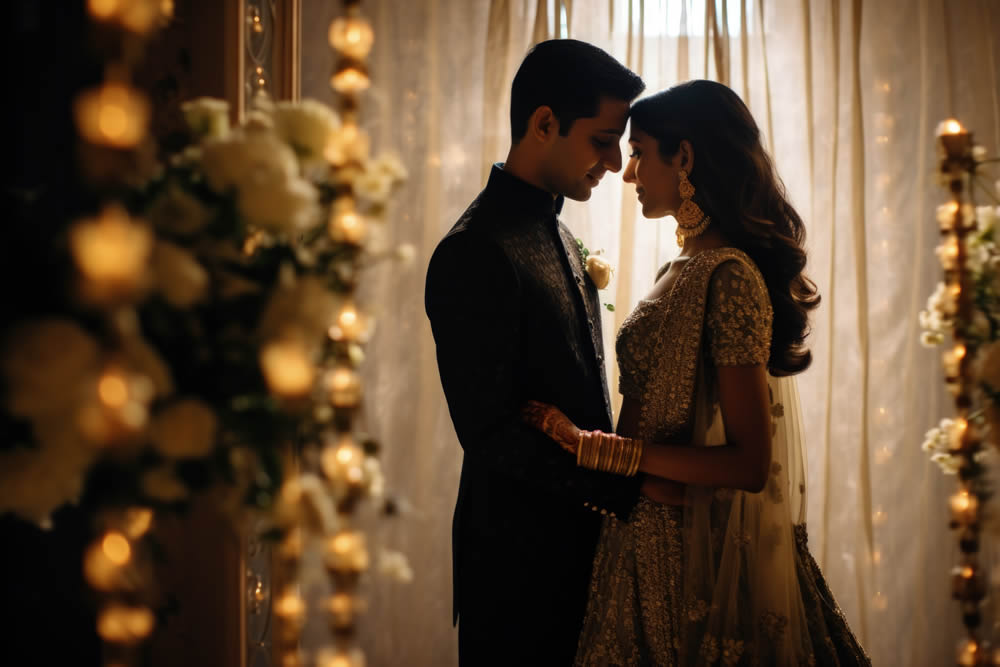
However, despite the widespread digitization of the film industry, an unexpected trend has been gaining momentum in recent years – the analog renaissance. Like vinyl records, vintage consoles, board games, and typewriters, the film is making a comeback among hobbyists and professionals alike. But what’s behind this back-to-basics phenomenon? Why do more and more videographers opt for an outdated medium? Some argue that the film is more authentic. Nowadays, when it’s become so easy to manipulate an image, many long for realness and true representation of reality, like when you used to leaf through your family album and see life’s moments as they were – unpolished, unposed, and full of emotion. The nostalgia aesthetic, popularized on social media, is another reason film is getting a second wind, especially among the younger generations. More and more creatives, including photo and video artists, are seeking to incorporate film’s unique, dreamy, retro vibe, distinctive textures, colors, and imperfections into their work.
The renewed interest in film is reshaping the video industry once again, just like digital technologies did at the turn of the century. In this article, we’ll examine how this shift affects wedding and family videography in particular and what unique challenges and opportunities come with shooting wedding videos on film. We’ll also look at the work of two videographers who are successfully using film in their projects. By exploring the intersection of traditional techniques and contemporary wedding videography, we hope to inspire a new generation of filmmakers and videographers to experiment with the art of film.
The Allure of Film in Wedding and Family Storytelling
The film renaissance is making waves in the world of wedding videography. An increasing number of couples favor videographers who can capture their special day on film, while service providers are finding that film can be a unique selling point in a crowded market. What’s behind the film’s irresistible appeal to both professionals and clients? It generally comes down to the four main factors. For one, film has a distinct visual quality that can’t be replicated digitally. Its signature texture, depth of color, and dynamic range create a rich and cinematic look. Plus, the subtle imperfections and artifacts that come with shooting on film often add character to the footage.
Another superpower of film is its remarkable capacity to convey the atmosphere and emotion of a moment, adding a sense of nostalgia and depth to the final video. This emotional aspect is tied to the authenticity of film. Unlike digital footage, each film recording is one-of-a-kind due to film’s physical properties. Both professionals and couples find it especially valuable. After all, there’s something truly special about knowing that your wedding video is a unique piece of art that can’t be replicated.
For many videographers, film is more than just a medium – it’s an artistic device that enhances the narrative. By choosing to shoot on film, videographers can elevate the story beyond mere documentation. In an era where digital footage dominates, film offers a way to stand out from the competition and offer clients something extraordinary.
Challenges of Shooting on Film
While film offers a unique aesthetic and emotional depth, it comes with its own set of challenges. For starters, professional film video cameras can be difficult to find and often come with a hefty price tag. To ensure optimal performance, these cameras also require regular maintenance and calibration, which can be time-consuming and costly. Not to mention, film cameras have inherent limitations when it comes to resolution and frame rate, which can somewhat undermine their distinctive visual charm.
Another significant challenge of shooting on film is the lack of instant preview. Unlike digital cameras, which allow for immediate review of footage, film cameras require patience. On-site, it’s impossible to double-check exposure and composition, so videographers must rely on their experience to get it right the first time.
Working with film stock itself can also be taxing. Each roll of film has a limited amount of footage, requiring videographers to be economical with their shots. Furthermore, high prices of film stock and the expense of developing and processing add up quickly. And that’s not all – storing and transporting film materials also incurs additional costs, which are ultimately passed on to clients.
To top it off, processing the film material can be an overly complex process. Finding reputable labs that develop and scan the film might take some effort. Once the film is in the lab’s hands, the development and digitization can take several days or even weeks. Throughout this process, there’s always a risk of damage or loss of the material, which can be devastating for both the videographer and the client.
The Demanding Art of Storytelling on Film
Capturing a wedding with a film camera demands meticulous planning and preparation. Since the traditional medium has several technical limitations, it’s vital to plan out the entire shooting day in the minutest detail. This involves developing a thorough script and storyboard to minimize the number of takes and optimize the use of limited film stock. Another crucial part of the planning process is coordinating the logistics with clients and shooting participants.
The challenges of working with film continue into post-production. Unlike digital formats, film offers limited opportunities for error correction and quality improvement. On top of that, there aren’t many available tools for color grading and visual effects. Synchronizing audio and video can be a delicate task as well since the process of recording audio separately from visual elements can lead to slight discrepancies between the two.
Finally, to successfully shoot on film, both the camera operator and director must be tech-savvy and possess a specific set of skills. For example, they must have ample experience with film and a deep understanding of its unique characteristics, as well as the technical expertise to set up proper exposure and focus on a film camera. Perhaps most critically, both professionals must be ready to make quick and accurate decisions on set, as the pressure to capture high-quality footage within a limited number of takes can be intense.
Why Shooting on Film Isn’t for Everyone
As we’ve discussed, successfully shooting on film requires extensive experience and niche technical skills, which not every videographer possesses. In particular, one must know the ins and outs of analog technology, which is fundamentally different from its digital counterpart. In terms of experience, the videographer must have a portfolio of successful shoots with a film camera behind their back. The lack of such background might result in costly mistakes on set. Another skill that comes with practice is the ability to anticipate and troubleshoot technical issues, often under pressure.
Shooting on film also comes with significant financial costs that can be a barrier for many videographers. As we’ve already said, purchasing a film video camera can be extremely costly, and renting one isn’t much more budget-friendly. Additional constant expenses include film stock, development, and digitization. Similarly, the inability to reshoot footage due to the nature of film means that videographers take on significant financial risk in case of an unsuccessful shoot.
Despite the growing interest in film wedding videography, the market remains relatively niche. As a result, clients may not always be willing to cover additional costs associated with film. Besides, videographers face stiff competition from digital videographers who offer more affordable services. With all that said, videographers who wish to expand their services and start offering old-school film shoots must carefully weigh all the pros and cons that come with this unique and challenging medium.
Case Studies: Successful Application of Film in Wedding Cinematography by Two Acclaimed Videographers
Steven Kopacz
Steven Kopacz, a former professional musician, is a filmmaker and founder of Wild Light Film, a video production company specializing in cinematic-documentary-style wedding videography. With a passion for capturing life’s precious moments, Kopacz has established himself as a master of his craft.
While Steven and his team use both digital and film technologies, they remain deeply committed to vintage Super 8 cameras from the 1970s to capture authentic and timeless moments. This dedication stems from a profound appreciation for the emotional depth and sincerity that only film can convey. Steven firmly believes that the medium’s inherent limitations actually make you think out of the box and carefully consider each frame. As an example of this creative thinking, Steven likes to use various film formats to achieve distinct artistic effects and create wedding videos that will maintain relevancy and emotional appeal for generations.
Let’s explore a couple of Steven’s wedding videos shot with the Super 8 camera and see how the use of film influenced his storytelling.
In “Molly & Kevin,” the grainy, organic film texture and artifacts add a tactile quality to the footage, drawing the viewer into the joyful atmosphere of the wedding day. As the camera focuses on heartfelt interactions between the bride, the groom, and their loved ones, the viewer can feel the authenticity and intimacy of the moment. Kopacz’s thoughtful use of film stock elevates this traditional wedding video into a cinematic celebration of love.
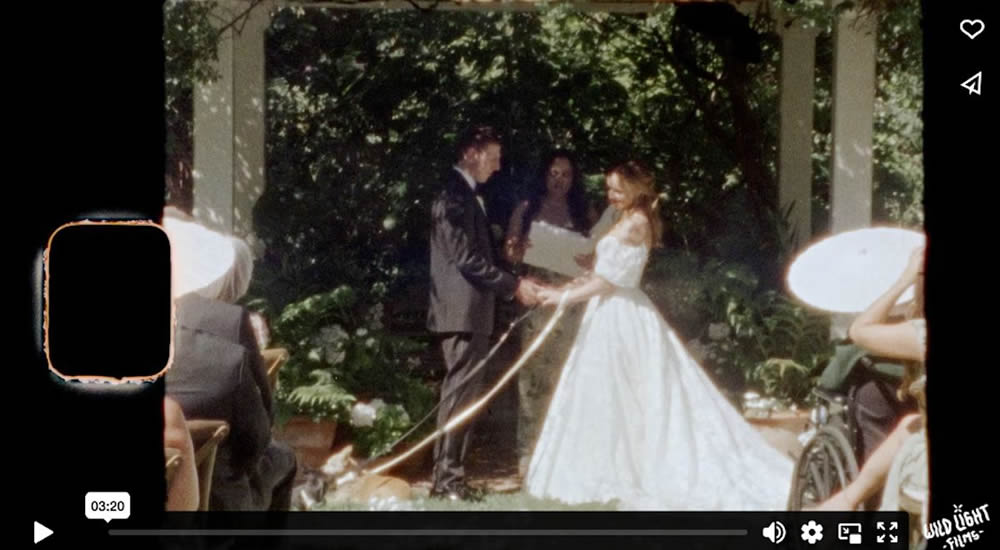
Screenshot: https://vimeo.com/973304354
In another video titled “Autumn & Ryan,” Steven Kopacz’s use of Super 8 film adds a dreamy, ethereal light to the sun-drenched landscapes of The Conrad in Punta De Mita, Mexico. The film’s inherent warmth and subtle grain amplify the visual allure of the tropical views, infusing each frame with a sense of depth and character. Kopacz’s masterful storytelling weaves together the couple’s tender moments, the joy of their loved ones, and the breathtaking scenery, crafting a deeply personal and cinematic wedding film.
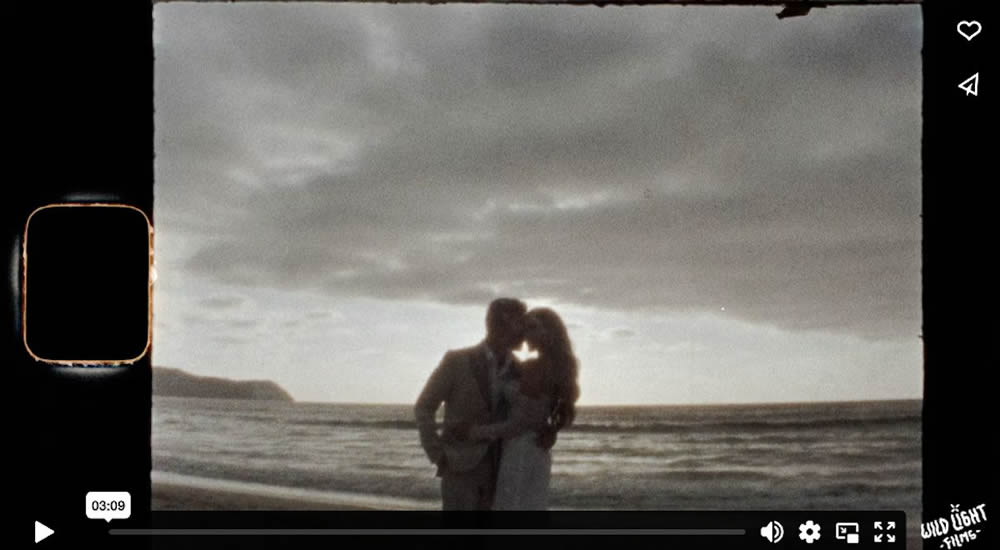
Screenshot: https://vimeo.com/950637809
Through his work, Steven Kopacz not only pushes the boundaries of wedding videography but also inspires other filmmakers. By sharing his experiences through blogs, social media, and tutorials, Kopacz has been motivating other creatives to explore the boundless possibilities of film. His passion for analog technologies has contributed to the growth of a community of videographers who seek to integrate the unique aesthetic and emotional depth of film into their own projects.
Natalia Kleinotskaia
Natalia Kleinotskaia is a filmmaker and entrepreneur who has established herself as a leading voice in the world of wedding videography. As the co-founder of the video production company Lero Movie, Kleinotskaia has built a reputation for crafting unique, authentic films that capture the essence of life’s most precious moments. Her journey in videography began with a focus on family and wedding films as well as marketing and promotional videos. Kleinotskaia’s fascination with shooting on film is part of her quest to create distinctive, heartfelt videos that truly capture the personalities and love stories of her clients.
To bring her unique vision to life, Natalia Kleinotskaia carefully plans each shoot, taking into account the limited film stock and the need to switch between its different types. To adapt to various lighting conditions, she uses three film types: daylight film for outdoor shoots, film specifically designed for artificial lighting, and high-speed film for low-light situations. Kleinotskaia’s innovative approach also involves combining film and Super 8 shooting, resulting in a richly textured and deeply nuanced visual aesthetic. This thoughtful blend of analog and digital techniques allows Kleinotskaia to craft timeless and contemporary films. She also achieves exceptional sound quality by splicing film frames with a separate soundtrack.
Let’s look at Natalia’s two wedding videos that employ digital and analog technologies.
In “Shanice and Daniel,” Natalia Kleinotskaia showcases her ability to seamlessly integrate film elements into a predominantly digital narrative. Shot on location at the historic Great Stone Church and picturesque Serra Plaza, the film beautifully captures the couple’s special day. Kleinotskaia strategically implements film for select moments, such as the establishing shots of Serra Plaza, the joyful celebration, and the romantic dance sequence accompanied by a soulful saxophone performance. These film segments add a tactile, nostalgic quality to the video, perfectly complementing the digital footage and elevating the overall emotional impact of the film.
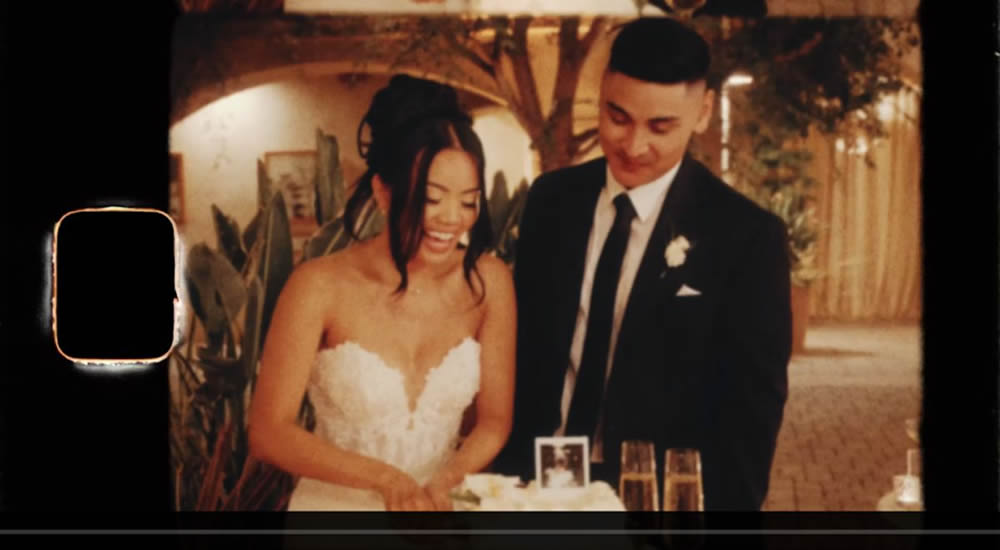
Screenshot: https://vimeo.com/1017778570/25eea17de6?share=copy
In a different wedding film “Ray & Samantha,” Natalia Kleinotskaia captures the joy and romance of a special day, set against the dramatic backdrop of Hurricane Hilary. Shot on a rainy day at La Verne, the film beautifully conveys the intimacy and warmth of the couple’s love. Much like in the previous wedding video, Kleinotskaia strategically uses film to add a touch of nostalgia and timelessness to key moments, such as the groom’s candid remarks about the weather, the heartfelt interviews with the bride and groom, and their tender first dance. The film segments also beautifully capture the couple’s small, affectionate interactions, imbuing the video with authenticity and emotional depth.
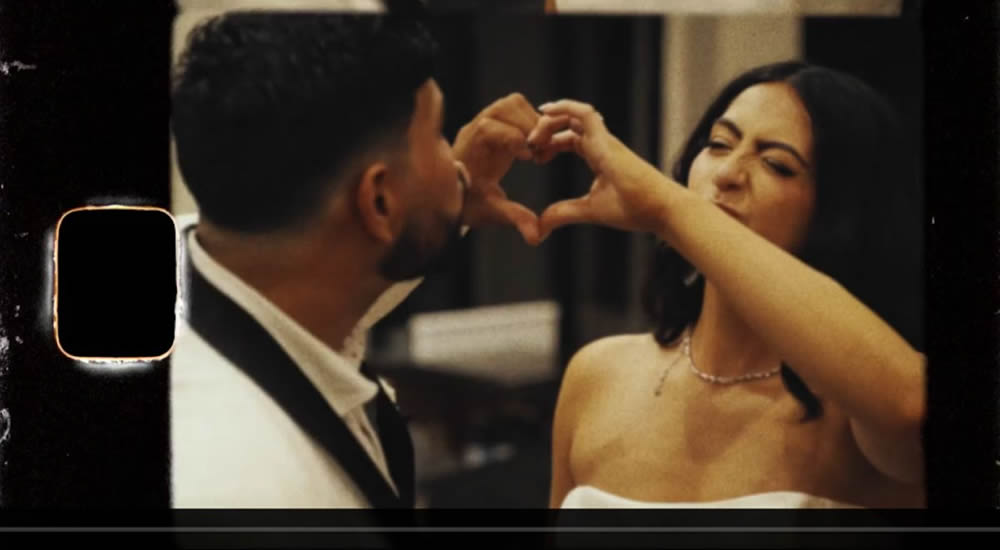
Screenshot: https://vimeo.com/886635391/cb0e0aa8f9
Natalia Kleinotskaia’s pioneering work in wedding videography has sparked a creative renaissance in the industry. By seamlessly merging film and digital elements, she has inspired a new wave of videographers to experiment with analog techniques. As a respected educator and industry leader, Kleinotskaia shares her expertise through master classes and workshops focused on working with film and sound, helping to shape the future of wedding storytelling.
Conclusion
The resurgence of interest in film, particularly in wedding videography, is a testament to its timeless appeal and unique ability to capture authentic, emotional, and deeply personal moments. We’ve seen the power of film in action in the works of Steven Kopacz, Natalia Kleinotskaia, and others, who have masterfully used this traditional medium to tell unforgettable stories. As a result, the industry is experiencing a growing demand for analog film from both couples and videographers, indicating that film is poised to play an increasingly prominent role in wedding storytelling. Building on this momentum, we invite professionals to join the film renaissance, experimenting with its creative possibilities and pushing the boundaries of wedding videography.
Article by: Venkat Prakash


